Astragalus tephrodes, Ashen Milkvetch
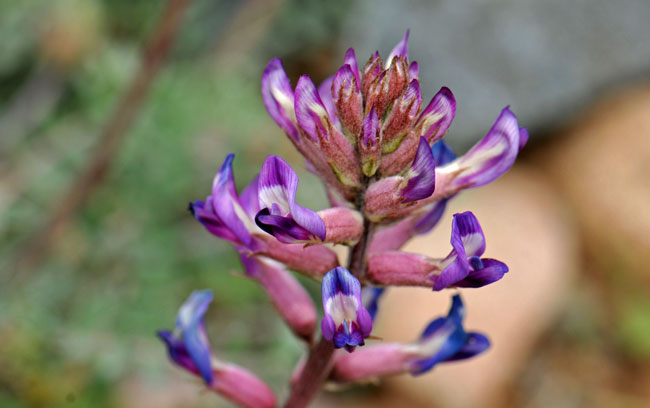
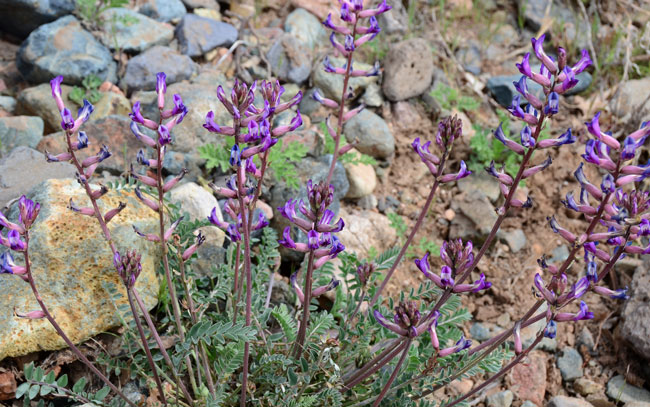
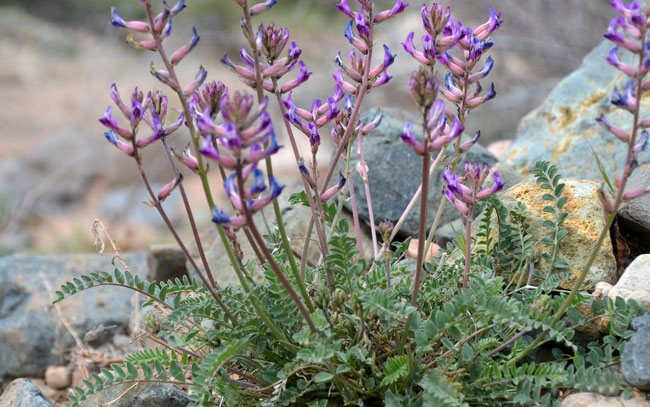
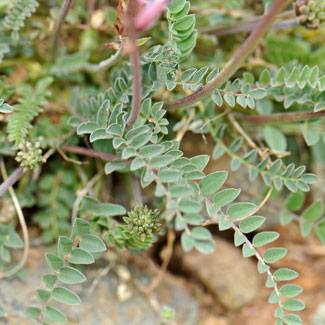
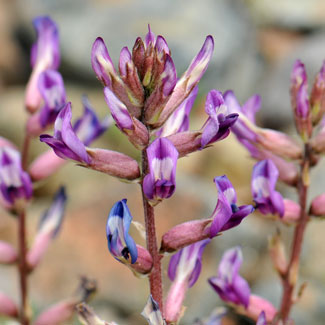
Scientific Name: Astragalus tephrodes
Common Name: Ashen Milkvetch
Also Called: Ashen Milk-Vetch
Family: Fabaceae or Leguminosae Family
Synonyms: (Xylophacos tephrodes)
Status: Native
Duration: Perennial
Size: Up to 20 inches (51 cm).
Growth Form: Ashen Milkvetch is a slender forb/herb; stems, if any, are short, laying flat on the ground (prostrate); the plants are covered with grayish-green short hairs (pubescence).
Leaves: Ashen Milkvetch has green, greenish-gray (ashen) or silvery leaves; the leaves are pinnately compound with small leaflets.
Flower Color: Ashen Milkvetch has purple or pink-purple flowers that are large and showy; the fruit is a pod.
Flowering Season: April to June or July.
Elevation: 3,500 to 8,000 feet (1,067 - 2,438 m).
Habitat Preferences: Middle to high elevations; open areas in pine forests, dry areas, rocky slopes.
Recorded Range: In the United States Astragalus tephrodes is found in central to northern AZ, CA, southwestern NM, southern NV and southern UT. The center of the U.S. population is throughout central and northern Arizona. Ashen Milkvetch is also native to Mexico.
North America & US County Distribution Map for Astragalus tephrodes.
U.S. Weed Information: Unknown
Invasive/Noxious Weed Information: Unknown
Wetland Indicator: Unknown
Threatened/Endangered Information: Unknown
The genus was published in 1753 by Carl Linnaeus, (1707-1778).
In the Southwestern United States: Arizona has 160 species of Astragalus, California has 180 species, Nevada has 189 species, New Mexico has 139 species, Texas has 60 species, Utah has 205 species. Data approximate, subject to revision.
And/or There are 4 varieties in Astragalus tephrodes;
Astragalus tephrodes var. brachylobus, Ashen Milkvetch, AZ, CA, NM, NV, UT;
Astragalus tephrodes var. chloridae, Ashen Milkvetch, AZ, NV;
Astragalus tephrodes var. remulcus, Ashen Milkvetch, CA only)
Astragalus tephrodes var. tephrodes, Ashen Milkvetch, AZ, NM.
Comments: Little information is available for the inconspicuous Arizona Milkvetch, Astragalus tephrodes. The pods are used taxonomically for their unique characteristics (sharp ridges).
Also see in Southwest Desert Flora; Arizona Milkvetch, Astragalus arizonicus; and Dwarf White Milkvetch, Astragalus didymocarpus.
Ashen Milkvetch, Astragalus tephrodes has attractive flowers, the flowers and their plants may be visited by butterflies, moths, flies, honeybees, Native Bees and other insects in search of food and nectar.
The genus Astragalus was published in 1753 by Carl Linnaeus, (1707-1778).
The species Astragalus tephrodes was described in 1853 by Asa Gray, (1810-1888).
The species epithet “tephrodes” (tephro'des:) is from the Greek word "tephros" for "ash-colored", a reference to the leaves.

